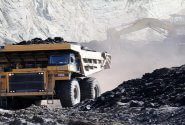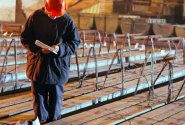Explaining the reasons for the high price of rebar the head of the Iranian Steel Rollers Association enumerated the challenges facing rollers, which in his view could be accompanied by many other problems in the production chain.
Ahmad Razavinik, president of the Iranian Steel Rollers Association, says about the high price of rebar: “In the year of the production leap, steelmakers have announced a 7 to 15 percent increase in production by holding a celebration and honking their horns; As the production of billets has reached 22 to 24 million tons, of course, the rollers are also happy about this issue, but the rollers are complaining about the pricing process of steelmakers’ products on the stock exchange.
Razavienik points out that the export of ingots in the first 4 months of this year has decreased by 21% and the export of rebar has also decreased by 41%, says: the supply of ingots in the commodity exchange has reached one-fifth of the consumption of light workers. However, the bullion is priced higher than the global FOB average in the form of dripping supply (unrealistically), which indicates the application of rents and backs that rollers are deprived of.
*** Trying to sell expensive
Emphasizing that steelmakers have no desire to export at all, he says: “Steelmakers try to sell products on the commodity exchange with a violation of between 20 and 25 percent of their products and sell the rest to the rollers in the open market, which causes the product to fail.” The head of the Iranian Steel Rollers Association, noting that Imidro is also aware of the violations in the commodity exchange, says: “Steelmakers, by applying their strategy in the commodity exchange, make raw materials 35% higher than the product.” The final ones are sold domestically, and with the supply of drops much higher than the global FOB price, they have become accustomed to overselling, and even receive guarantees for future price increases.
Taking into account the ingots sold to the roller in September, in terms of the finished price of ingots plus value added and freight for the roller, each kilo of ingots is priced at 9400 Tomans, which indicates that from now on the roller must either sell his product below the price or somehow liquidate himself. Circulate in the market to compensate for losses or, consequently, sell expensive products at high prices.
*** We warned about the price
“Rolling workers have warned regulators to stop steelmakers from selling too much, but in the current situation no immediate action has been taken to end the steelmaking chain,” he said. Expensiveness does not make sense, and it has no meaning other than price engineering to obtain rents and curtains.
He pointed out that the steelmaker should sell the price of ingots at 88% of the global FOB plus the average rate of Nima in the week before the transaction in the commodity exchange with the approval of the government regarding pricing. The ship delivers (immediate) delivery to the customer (export), but delivers the same product to the roller (factory door) with delivery within the next two months above the export price. This is while the price ceiling of each kilogram of ingots should be sold inside with a price ceiling of 7,000 Tomans, but without considering the freight and 9% value added, each kilogram of ingots is given to the roller with 8250 Tomans and the price of each kilogram of rebar is only With 3% profit margin, it is sold for 8400 Tomans.
According to Razavinik, if the approvals of the market regulation headquarters regarding pricing and observance of the supply floor in the commodity exchange are observed, the roller coaster can be in equal conditions of competition and the prices will be more logical in proportion to supply and demand in the market.
*** Supply of ingots in the stock market
Another interesting point from Razavinik’s point of view is that out of the production of more than 5 million and 500 million tons of ingots in the country in the first 4 months of this year, only one million tons have been offered on the stock exchange, of which 200,000 tons have not been delivered yet.
On the other hand, about 1.250 million tons of long sections such as rebar, beam, angle or rolling have been offered in the commodity exchange, more than 400,000 tons have been exported and more than 400,000 tons have been sold out of the stock exchange, and in total more than 2 Millions of long sections were produced and sold, which shows that despite the delivery of one million tons of ingots, more than 2 million rebars were produced and delivered to the customer. This scenario shows that only with price engineering and the supply of ingots, steelmakers can easily export and easily receive rials.
The head of the Iranian Steel Rollers Association states: Although in one part of the production chain, the steelmaker makes the most profit, on the other side, the roller maker suffers a loss and operates with only one-fifth of its capacity. In this situation, the roller is placed with minimal labor coverage and suffers a loss.
Razavinik reminded that the lack of supervision of the regulatory body and policy-makers regarding the observance of the supply floor and the pricing method has made the price of ingots more expensive for the rolling mill, and specified: The price of each kilo of ingots is calculated with 7 thousand Tomans and the price of each kilo of rebar will not be more than 8 thousand Tomans.
*** Concluding remarks
He concluded by pointing out that the continuation of the current situation will be to the detriment of the roller coaster, and with the costs of energy and feed to produce the final product, we are witnessing a sharp drop and adjustment of force in roller workers, warning of the continuation of this situation.
این مطلب بدون برچسب می باشد.












ثبت دیدگاه